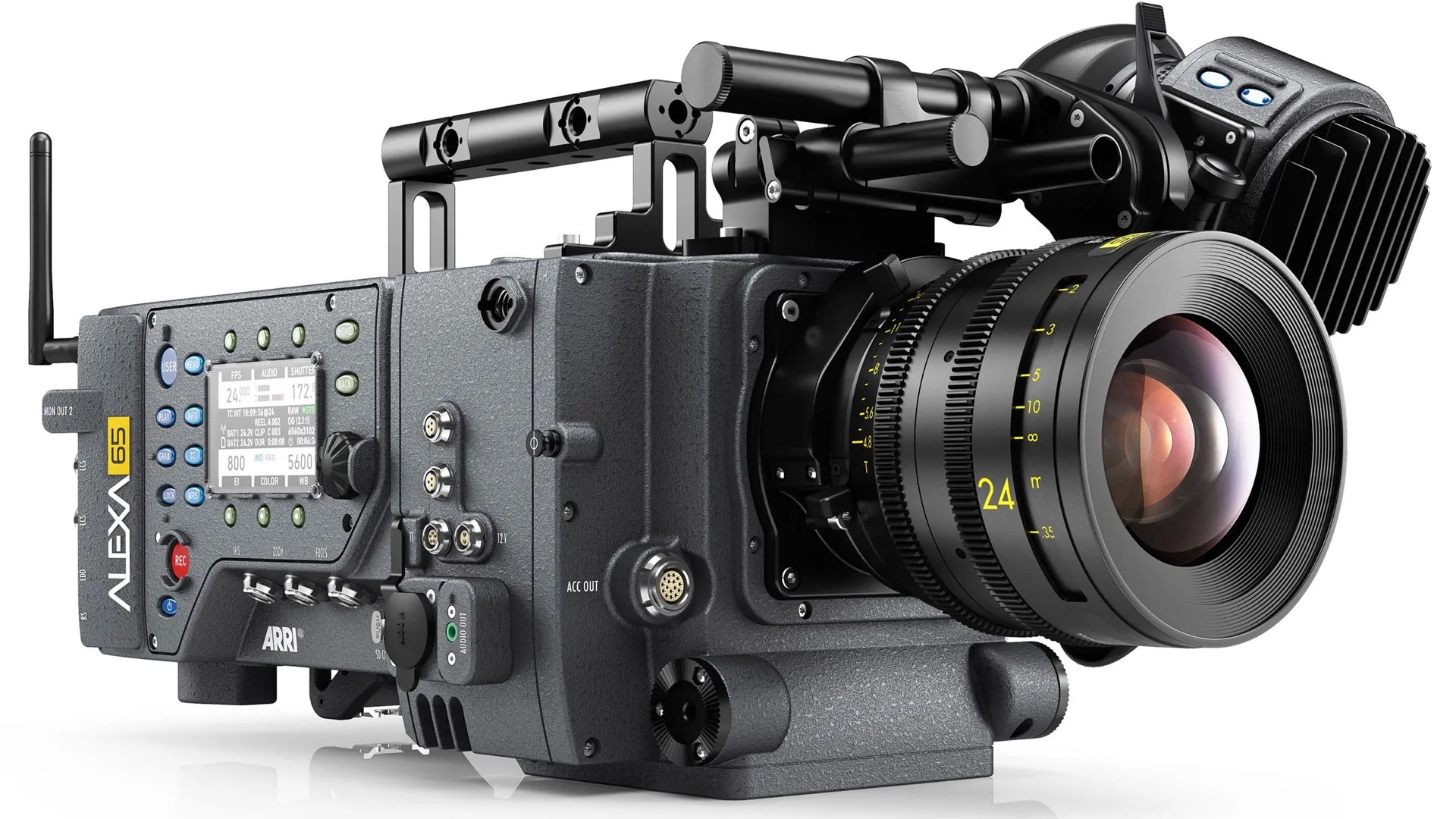
65mm cameras are still rare beasts, but given the popularity of mega-ultra-pixel cameras such as the Fuji GFX100, that might not be the case forever.
Bigger isn't necessarily better, at least in the minds of the people at Arri who built the much-adored Alexa 35. A glance at the big-chip market, meanwhile – including everything from Alexa LF to Sony FX3 – reveals a popular more-is-more attitude to camerawork. It’s something that might easily generalise into the idea that, even more is even more. Might next year’s market demand something even bigger?
After all, Arri still keeps Alexa 65 on the shelf in case a production comes looking for something bigger than LF, and for which money, batteries and backache are no object. The fact that there’s never been an Alexa 65 Mini hints at the sort of client Arri has always expected for the camera, and for some people the image of an entire grip team lugging the thing along like a team of pall bearers only adds to the allure.
Similarly, while Vision Research may no longer offer the Phantom 65, it retains the title of first ever digital camera with a 65mm-sized sensor. Two of them were duct-taped together for early IMAX 3D productions, including Transformers: Age of Extinction. It’s easy to forget that the Phantom 65 was released in 2008, and though it would not reach its full potential until a 2013 upgrade, it’s a surprise to many that it actually predates the 5D Mk. II, and and thus widespread access to full frame cameras.
Anyone buying a Phantom 65 in 2008 might have felt like they were paying early-adopter prices, but when’s that not been the case for the biggest of big formats? In 2023, people shooting for really, really big screens are lucky enough to enjoy all those choices and more, with 65mm film origination probably boasting more development than any other film format thanks to the (relatively) recent Logmar Magellan, if you can find one to rent.
Meaanhile, over in stills...
As the fan reaction to the mighty Fujifilm GFX100 showed, though, there’s an enormous amount of enthusiasm for the huge even at less extravagant budget levels. The GFX100 actually has a sensor somewhere between between LF and 65mm in size, though while it’s an utterly spectacular stills monster, it’s actually a fairly middling video camera. It’ll shoot 4K from a very big chip, but aliasing performance and frame rates are far from world-leading, a concomitant of handling the information from that titanic array of pixels.
It is presumably possible to build a better cinema camera than the GFX100 with a larger-than-LF sensor. Even a consumer-targeted one might still be ambitiously priced, but then people do buy limited edition sports shoes that cost more than a nice vacation. There are all kinds of objections which could be raised against bigger-than-LF cameras, although lots of people expressed pretty reasonable doubts over the necessity for anything beyond 4K, and that argument has been rather reached and breached, at least in terms of what you can buy in the shops.
Solving the issues
The practical issues are fairly predictable, but they’re equally no joke. Modern cameras always have the choice as to whether they’ll trump the competition with a huge resolution count, or seek the approval of moustache-twirling artisans by moderating resolution in favour of sensitivity and quiescence. In 2023, when images are invariably scaled down significantly between camera and distribution, it barely matters anymore; a certain area of silicon has a certain ability to pick up photons, and how we divide that up might almost become a zero-sum game.
More pixels means more storage, although theoretically so does more dynamic range. We’re already building cameras that have enough quiet stops of brightness handling to test the limits of a 16-bit file format; at some point, we’ll end up in the same nirvana the audio people have with 32-bit float and far less need to worry about that pesky iris control at all.
Even if we solve the storage issues, there’s lenses. It’s not quite clear how many LF cameras end up shooting on modified stills glass, built to expect 8-perf 35mm film. With an FX3, there’s an adaptor for anything. At the high end, lots of manufacturers have spun up LF-compatible glass. Either way, it’s clear making lenses to cover sensors that big is not a very new concept. Medium-format glass may be a little more rarefied, meaning medium-format designs that would accommodate 65mm formats are a little less available on eBay, though they certainly exist if we don’t demand everything be an f/1.4.
Prosumer 65mm?
Whether a prosumer-targeted 65mm camera is a practical idea remains dubious. At the high end, lot of the best cinema cameras are built largely as prestige projects – not loss leaders, by any means, but there’s no avoiding the reality that Sony makes way more money out of the FX6 than it does out of the Venice II. It could probably be done. For some reason it hasn’t been, and it’s probably not because there wouldn’t be any difference in the pictures. The Alexa LF’s sensor is 36.7mm wide. The Alexa 65’s is 54.12mm. That is, to be fair, effectively one-third more, and enough to improve the pictures noticeably, though it’s also enough to put a focus puller in a rubber room.
Would it be too much of a good thing, excessive, extravagant, over the top, and more of a hindrance than a help? Sure, but since when has that been a concern?
Tags: Production


Comments